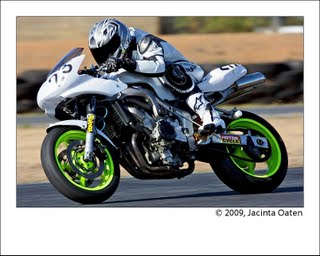
Whether you’re taking photos of a football match, motorbike racing or the kids riding their bicycles, you’ll find yourself trying to capture movement. Photographing moving objects can be tricky but there are some simple techniques you can use to make it more likely that your photos will be successful.
Plan your approach
Before you begin shooting find a good place to shoot from. Get to the event early so you have time to look around for a good position to stand. If you have a telephoto lens, a position in the stands at the races or football will let you get close to the action even when you’re far away and you can get good shots over the heads of the crowd. Alternately, get right down to the boundary fence for a different perspective of the action.
Anticipate the action and be ready to shoot it. Point the camera to where you think something will happen and press the camera shutter half down to focus the shot and wait. When the action comes into the frame, press the rest of the way to take the shot. If your camera has a sports mode – it is generally indicated by a running figure – use that. Sports mode reduces the time it takes to capture a shot by increasing the amount of light coming into the camera. The faster the shot is captured, the less the subject moves while the shutter is open and the less blurry they’ll be.
For most sports there are times that can be considered high action – a player about to take a high mark, a goalie trying to save a goal in soccer or horses jumping from the starting gates. Anticipating these events and capturing them can give great results.
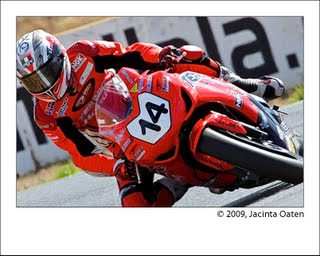
15 year old sports photographer Jacinta Oaten used a combination of anticipation, great location, large aperture and fast shutter speed to get the wonderful shots featured in this post.
To blur or not to blur
Blur should not be seen as a bad or undesirable thing. By shooting at a slower speed and allowing the background to be well focused and the subject slightly blurred you can get an impression of action in your shots. To slow your camera down so you can blur the action, choose Landscape mode or, if your camera is manually adjustable, slow the speed down for example to around 1/15 th of a second.
To reduce blur in a shot, use the fastest speed setting of which your camera is capable. If this doesn’t work, follow your moving subject with the camera. Stand still and point towards the subject and start moving the camera to match their movement. Shooting as the camera is moving along with the subject results in the subject being focused and the background blurred. Again, you will have a pleasing sense of movement in your shot.
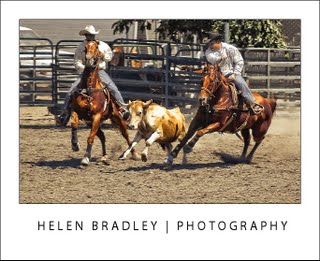
To capture the action at the rodeo I used burst shooting mode to maximize the chance of getting a good shot.
Your camera’s burst shooting mode is also handy at capturing action. In this you’re your camera takes a series of shots in a short time interval. Instead of having one shot, you now have six or nine taken in very short succession. In some cases these shots are smaller in size than regular shots so, before using this mode, ensure your camera is set to capture at its highest resolution and to store at the lowest compression so you ensure these shots are the best they can be. However, the very speed of capturing the shots makes it more likely you will get a shot you like from those you’ve taken.
Look around you
When shooting action scenes, don’t focus entirely on the action and miss out on the stories that happen behind the scenes. Often people sitting in the crowd will make a good shot, so when someone is about to kick for a goal, turn around from your position on the boundary fence and shoot the crowd’s reactions to the kick. Look for other scenes that are compelling such as the athlete’s reactions at the end of the race or a bored official reading a book with action taking place all around.
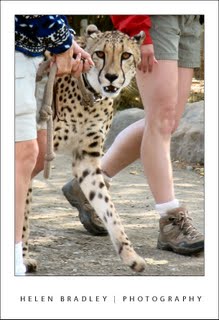
Finding a good position to shoot from and anticipating the shot can give some great results.
Know your camera
The high point of a game when your favourite player is about to shoot for goal is not a good time to realise you don’t know how to operate your camera. Before you pack your camera for an event, spend time familiarizing yourself with its settings. Know how to find and use the various camera modes and practice following motion – taking shots of cars driving down the street is a good way to do this. Check your camera’s settings to make sure you’re taking the quality shots you think you are and check that the compression format being used is acceptable. If you’re using a camera with a small number of megapixels (3 or less), buy a big storage card so you can shoot at the highest quality and lowest compression possible.
If you’re using a digital camera, take plenty of shots and delete the ones that didn’t work out later on. Consider any space left on your camera card at the end of the day as being a wasted opportunity to try your new skills.


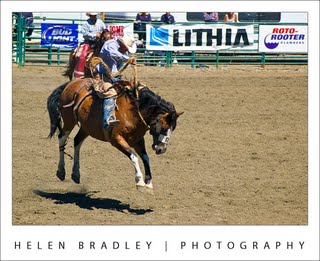
Post a Comment
Please feel free to add your comment here. Thank you!